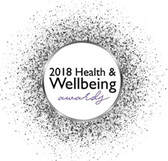|
All yoga is good... to a point.
Take the analogy of cooking. McDonalds is food. It has good energy, has great texture and flavour (subjective - but many would agree and $millions has been spent on developing it in labs), it fills you up when you are hungry, and has protein and carbs to keep you going. And you don't even have to know how to cook! Home cooking is better food. It has good energy, fills you when you are hungry, tastes delicious, but you take more responsibility for what you put in it. You are more discerning about your intake of the 'other stuff' (fat, salt, sugar, low quality ingredients). It is more nutritious and will serve your longer term health 1,000% more. It has better balance that includes fresh vegetables and micronutrients. It avoids the stuff your allergic too, and gives you more of what you actually need. It adapts each week and each month depending on the season or the stage of health or stage of life. But you have to learn how to do it. When we first start yoga, we work on the assumption that what we desire is what we should have. We find the Youtube videos we enjoy, or the class that makes use feel great. This is almost everyone's starting point. We simply wouldn't carry on if it didn't feel good. It is a great place to start. The larger class can be fun, exhilarating and challenging - enjoy the great vibe and energy of the room. The cons are that the practice might not be quite right for you, and over time, this can be a red-herring in our yoga. After a while, especially as we age and our bodies and minds need a more thoughtful and careful approach, we learn to listen to how we are reacting to our practice. How is it serving us? Are our aches and pains improving? Is our sleep better? Is our mood improving or are we getting frustrated? Are we becoming more patient and kind with ourselves and those around us? Some of these markers are subtle, but incredibly important. If any of these are off, then an adjustment to the way we are practicing is almost certainly necessary. This is where your relationship with an experienced teacher can help guide you to a more nuanced and balanced practice. Enjoy your practice and reflect on how well it is serving you so that your time spent in yoga can be even more fruitful.
0 Comments
Celebrate our teachers
We have some wonderful teachers at YogaSpace including some of the most experienced in Bristol. Marian has been running her Thursday classes since 1998, which is the same year that I started practicing yoga. Something must be going right for us to get the award for BEST YOGA CENTRE IN BRISTOL, 2024. Experience really counts in a yoga teacher. Especially if you find yourself in an older body, or have an old injury that needs extra care and attention. Almost all our teachers are 50+ and have been at this for at least a decade so know what we are doing and can ensure it is ideally tailored to those participating. 'Yoga with Adriene' is great if you are also in your 30s, young and fit etc., otherwise you might find yourself pursuing a practice suitable for someone younger. She says and does a lot of great stuff, but... having an appreciation for bodies and minds that have some wear and tear, a collection of injuries or issues, are flat-out in their busy lives, or are perhaps post-menopausal, really does matter when it comes to teaching a movement-based practice. Alongside our brilliant skill and experience, it is also why we keep our classes pretty small. One studio just up the road from us squeezes in 35 students in each class. 35!! I hope no-one needs an adaptation or any bespoke attention as it simply isn't possible to see what everyone is doing in a group that size. Of course almost all practice is better than none. YouTube videos for folks in their 30s is fun, squeezing into a hot room with lots of others is an exhilarating buzz. Or if you want tried and tested experience for grounded, well-balanced yoga that will leave you feeling great and support you in a tailored way, then you are in good hands with us. Busy at the moment? There may be extra social gatherings and more demands on our time and things to get done. There are sights, sounds and smells that are stimulating and seasonal and that we would miss if we didn't have them (remember that the next time Jingle Bells is coming at you). Much of this can be enjoyable, some perhaps stressful, but life can certainly seem extra busy and we may feel like we are being swept along. Taking time for more grounding yoga practices and creating pockets of space for moments of stillness can be a huge support to help us stay present enough to enjoy what the time of year has to offer. I'm particularly noting this year's season as I've just lost a friend to a long illness. Sadly this was her last Autumn. As heart-breaking as this is for those who knew and loved her, it reminds us how precious these moments are. This experience of life, as it is right now, is actually it. We don't know what will come next. And while this doesn't mean we shouldn't plan for, and usher in a better future, we should also recognise that this moment right now is our life to experience fully. Yoga helps us settle in to our bodies more fully and comfortably. We realign ourselves back to our centre, and re-find our natural posture and balance. We settle agitation and stress in the body, ease our stiffnesses and aches, reduce turbulence in our minds. Whole body movements and breaths practiced regularly bring us into a steadier and more stable version of ourselves able to more fully notice and embrace the joy of the season. With the colder evenings now set in for the winter, perhaps heading out to the studio, or getting on to your mat at home feels harder? Some of you have (or want) a regular home practice, some of you only practice in a group class, and some of you do both. In an ideal world we would do both, but home yoga and group yoga are both great in their own right. Our initial challenge is doing something! The main aim is to regularly and consistently move, breathe well, and become more embodied and subtly aware of yourself and life. Our bodies love to move, and when given time and space to practice, respond in incredible ways. The next challenge is doing what is right for you. What will bring you what you need in the most effective way. Group yoga is very different from home yoga, and both have brilliant benefits, advantages and disadvantages. And they are a wonderful complement to each other - in an ideal world, we would do both. GROUP YOGA More challenging. Typically more challenging, not necessarily physically, taking you into new territory in a guided way to discover aspects of your body, breath and awareness that you might not delve in to by yourself. It usually isn't as frequent as home yoga, so that extra challenge has time to integrate over the days until your next class. Teacher guidance. It offers more guidance from a teacher. Habits that you wouldn't notice on your own can be highlighted and explored. A teacher will be able to provide experience in how to overcome obstacles, issues and offer new insights physically and beyond. The process of finding an optimum practice that works for you and your unique body and situation can be achieved more quickly and avoid more of the pitfalls along the way. Motivating. It can be great to bookmark that time in your calendar, and help keep you motivated and accountable so that your practice actually happens. This requires its own commitment to showing up. Prebook your classes or term so that it is given priority in your life. And the friendly faces each week help keep it fun and enjoyable. HOME YOGA Personal to you. Home practice is typically more frequent, often shorter, more gentle and more personal and intimate with yourself. Once you know what your doing, there are less external reference points to guide you. Its just you with your body, breath and mind. The practice can gradually become more internal, and perhaps more subtle. Shorter time more often. If you are taking an hour long, class-like practice every day, chances are this is more than you need to do, so only do that if you know you are being careful, and have lots of spare time or have built this up over a while. It is incredible what a shorter practice, taken daily, with repetition and a well-focused mind-set can add to your life. Start small. I've been guiding home practice in 1:1 sessions for over 15 years and initially, I would suggest that 10-20 minutes is plenty if your goal is long-term. Spend a month doing a shorter practice, getting to your mat daily and consistently, and then only once the habit is established and solid, then consider adding in a little more, step-by-step, until it feels optimal, enjoyable, and fits in to your life. It doesn't have to 'look' impressive for it to be brilliantly effective. 30-day challenge. If your interested in jump-starting your own home yoga practice, your invited to join my free 30-day challenge to help you on your way. Go to the Free Yoga Resources page and start from there. 6-months from now you'll be so glad you did! Our yoga practice is often forward looking - we practice to gain something. Perhaps we are seeking more flexibility, a less achy back, an unscrambled mind, a stronger and calmer end to our week. The idea of seeking something from yoga is universal, especially when you are getting started. We all take up the practice for a reason, and yoga in its brilliance, is often a good solution. It does all of those things, and much more. However we don't have to always seek something from our practice and their is a curious paradox here. Not seeking or expecting a reward from what we do is a different stance from how we approach most of the rest of our lives. Instead, we can move and breath for the joy of it, for the habit of it, we let go of the expectations and hopes, and simply see what arises. This step-change in our practice can be a revelation. It can provide a gentleness towards ourselves. We might discover how to listen inwards more fully. And perhaps opening towards what is there now, not what we are trying to create or get. And it allows us to discover space and be more receptive to what arises. Instead of pushing or demanding something of a posture, or of our breath or focus, invite a gentler approach. Bring an openness to a movement or to the breath, back away from pushing, struggling or trying too hard. And within that find receptivity. Pushing against anything will meet resistance. Sometimes it is appropriate to address this resistance. But it is also wonderful to let go of the pushing. Allow a pose to unfold for us instead of 'creating' it with effort. Allow the body to be more receptive to a stretch because it feels safer when not being pushed. Allow the nervous system to calm down. There is research demonstrating that if you take a stretch at only 30% of the maximum, so hardly anything really, that it is far more effective at gaining mobility than taking the stretch at 70% or higher. Receptivity and repetition do the job better than pushing, and allow us a spacious and relaxed body and mind along the way. Next time you take to your mat, instead of expecting or pushing, try giving thanks for what you already have, what is already there, and open gently into what arises without expecting anything more. It offers a beautiful pause in life which I would highly recommend. Getting to your yoga mat doesn't get easier when it rains, but the brilliant rewards are always worth it, so what will help? The weather, the dark evenings, the wind, and the cosy sofa all work to keep us home. Getting to your mat can feel hard. But it doesn't need to if you simply plan ahead and commit to it in advance. Thinking about whether to do your practice or not is a slippery slope. Our thoughts are tricky, easily derailed, and unreliable for doing what is best for us. Not getting to your mat can be tempting when the weather is bad. And without the commitment in advance, it won't get any easier. Take your decision to practice once, in advance, when your feeling pro-active. It is soooo much easier than deciding each day or week whether or not to turn up. I love getting to the end of a term of classes and inviting people to see if the physical work or breathwork feels different than when they started a few weeks previously. We have been getting into the deeper work that familiarity in your practice allows. Perhaps the half pigeon pose isn't as intense after doing it for a few weeks, not because you aren't doing it as fully, but because the body has changed and is less restricted in the hips than it was before.
Yoga really does work. Brilliant! I had a lovely email from someone from class yesterday and I would love to share it with you (it's anonymous of course, but thanks so much for sending me your story of how yoga is helping you!!). "I walked into the office this morning and my boss took a deep breath to speak. (Clara note: her boss is VERY difficult to work for) Instantly a little voice in my head said “You’ve got this. You did yoga last night!” Isn’t that incredible! I stood tall and answered politely! So yoga is working for me! Looking forward to our next session!" Yoga practice helps our bodies change for the better, and helps our nervous system to become more resilient to stress and strain. We become more open and available to meeting antagonism with friendliness, holding our ground with amity rather than anxiety. Our minds become more open, relaxed, spacious, and we can let go of negative patterns and embrace a more positive way of being in the world. All that from a weekly class. I love it! I was away for a wonderful weekend of yoga last week and feel replenished in my personal practice. I rediscovered more spaciousness, forgotten techniques, and re-ignited some subtle changes that are translating into a more transformative daily practice for me. Some aspects of practice come to the forefront with a teacher observing how you are in your yoga and guiding you from what they notice. We all slip into being on auto-pilot sometimes. We assume we know what we are doing (and we might, more or less), we assume we know how to 'do' the pose or the breath, and forget to let the body and breath lead the way, and be listened to, and responded to in new ways each time we arrive in our practice. As is so common in the rest of our life, we lead from our heads, and 'will' ourselves into the poses and techniques - which is great, but not as fruitful. Once you are established in a regular practice, this is one of the pitfalls that can arise. Practicing at home is wonderful, I'm a huge advocate of it - but face to face contact with a teacher to help observe, prompt and redirect you can be so helpful in rekindling how transformative our practice can be. Trying new ways of doing familiar things can be completely refreshing. Imagine feeling more confident in yourself, more peaceful at work and at home, more stable in body and mind. Easeful in your movements, in your attitude, and in your body and breath. Quick fixes are no longer required because you feel good more often than not and your sleep and health improves.
Yoga helps you with all of this. It requires a little input from you, a commitment to regular practice, but it offers so much more than it requires. There is never a great time to squeeze it in. Few of us find time hanging around, empty time where we go "right then, I've got time for some yoga now." Time isn't found to do yoga, you have to make time, by putting it aside in advance, committing to getting to your mat, scheduling it in to your diary. Literally leave your mat out so you'd have to fall over it or step past it to miss your practice. Book in advance and you'll get to your practice and start to cultivate all of the wonderful benefits that it delivers, and much more besides. |
More blog articles >Categories
All
Archives
July 2024
|
|
Bristol YogaSpace Ltd
Princes Place, Bishopston Just off Gloucester Road Bristol BS7 8NP |
|


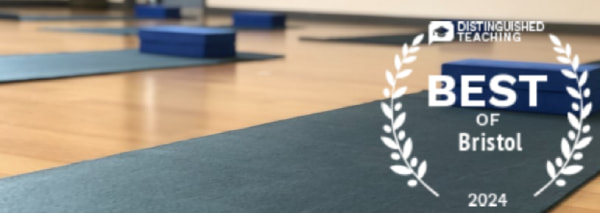
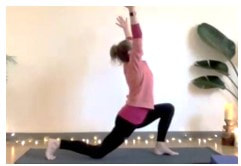
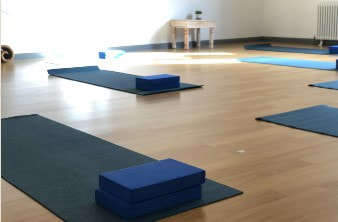
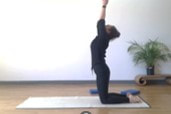

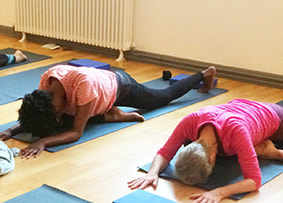
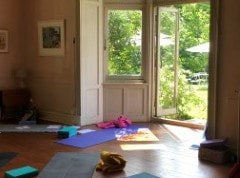
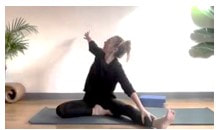

 RSS Feed
RSS Feed

